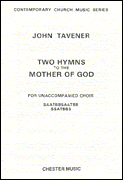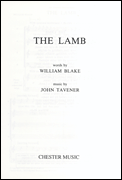A Hymn to the Virgin (1930, rev. 1934)
SATB Double Chorus a cappella
Boosey & Hawkes Sacred Choral
A Hymn to the Virgin (1930, rev. 1934)
SATB Double Chorus a cappella
Boosey & Hawkes Sacred Choral
- Boosey & Hawkes Sacred Choral
- Boosey & Hawkes
- SSAATTBB A Cappella
- Benjamin Britten
- 1.95 (US)
This product has a minimum order quantity of five copies.
for unaccompanied SATB with solo or semi-chorus SATB quartet
Text: anon (circa 1300)
Publisher: Boosey & Hawkes
Difficulty level: 2
As young as he was, aged only 16, Britten produced in this carol a tiny masterpiece. This is one of the most well-known and best-loved of his choral pieces. Understandably so, too. It has all the ingredients which make for a really satisfying choral experience. The use of a solo quartet or small semi-chorus, best placed at a distance, brings a dramatic element to the essential simplicity of the carol. The Latin responses of the semi-chorus to the medieval English words of the main chorus give these responses a further element of mystery which adds another layer of spiritual drama. The ratcheting up of the intensity in the final verse by increasing the tempo, by the ATB of the main chorus singing continuous rising phrases and by the sopranos singing a short phrase which is answered by the semi-chorus brings the piece to its climax. The final tranquillo page leads the carol to its conclusion in a mesmerizingly beautiful final phrase sung by the semi-chorus.
Care needs to be taken with the speed, the semi-chorus placing, and the creation of an atmosphere which demands attention from the listener. Speed: be careful to note Brittens marking of quaver (1/8th note) = 69-72. This is very slow indeed. Try it with a metronome. Many conductors perform this piece at crotchet (1/4 note) = 69! Frankly, I find the original speed too slow to make this piece flow. I see that when I recorded this with the Finzi Singers we made a tempo of crotchet = c50. Purists may be dismayed at this wilful ignoring of a composer's intentions (especially given the strictures outlined in the Preface to this Guide). I think if I were to re-record this now, I would choose a tempo of about quaver = 88. Note that for the quicker final verse Britten suggests a crotchet tempo. This means he did think about the issues of speed very carefully. Placing: Some choirs choose to put the semi-chorus at the other end of the church, or in a gallery for dramatic effect. Directors, however, have to remember that while this might work in the first two verses, in the last verse the two groups sing together and have to balance to some degree. Thought should also be given to the fact that if the semi-chorus is placed at the other end of a church behind the audience, the audience sitting near the back will hear them more strongly than the main choir. It is best to place the semi-chorus behind the choir but still quite close, perhaps by the altar if the main choir is in the choirstalls, or just in front of the altar. Always make sure that the semi-chorus can see the conductor!
Duration: 4 minutes
Paul Spicer, Lichfield, 2011
Instrumentation
- Choral
Product Details
- #HL 48008930
- 9781458424532
- 073999649703
- M060014512
- 6.75"
- 10.5"
- 12 Pages
Prices and availability subject to change without notice.















